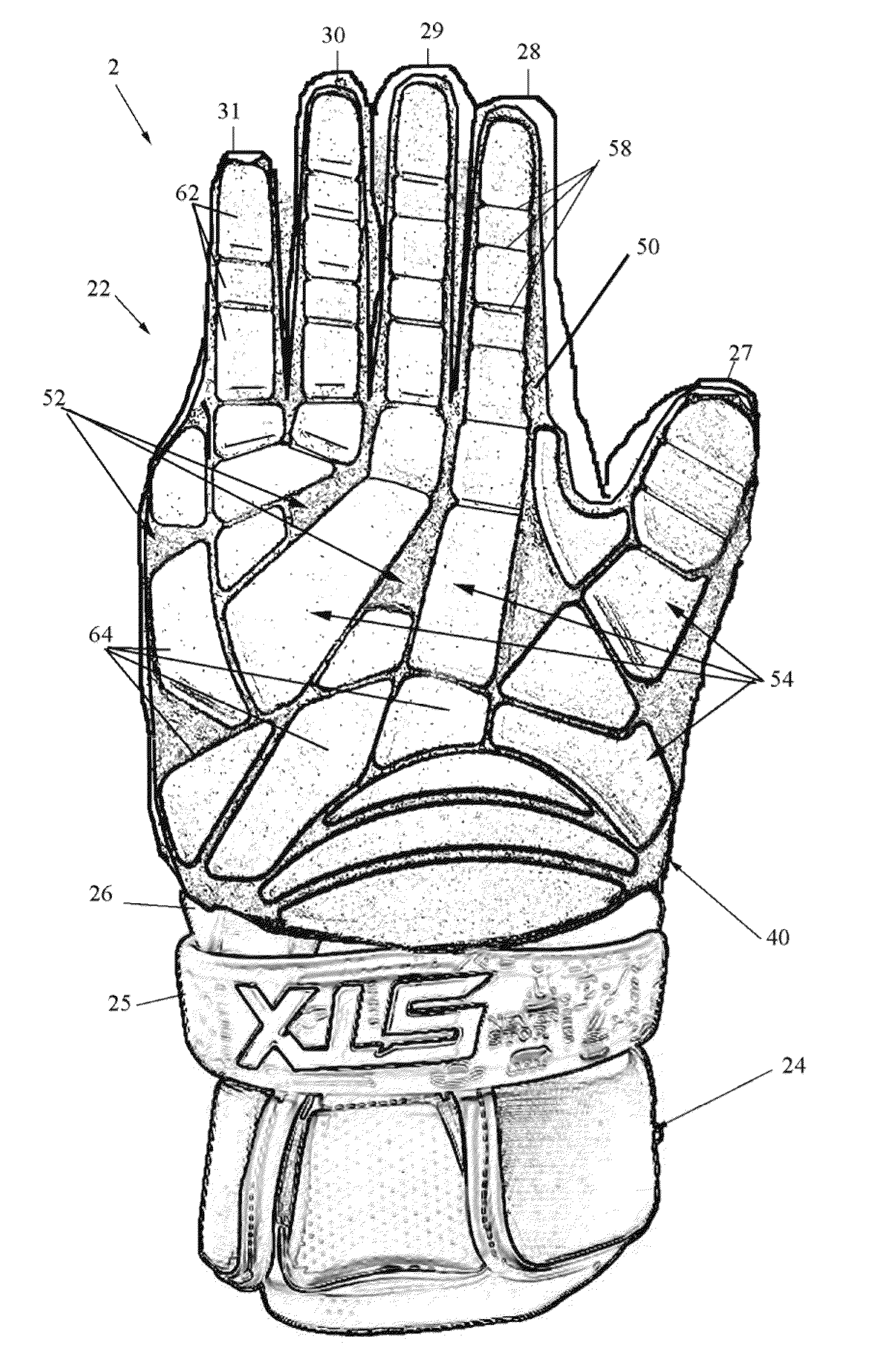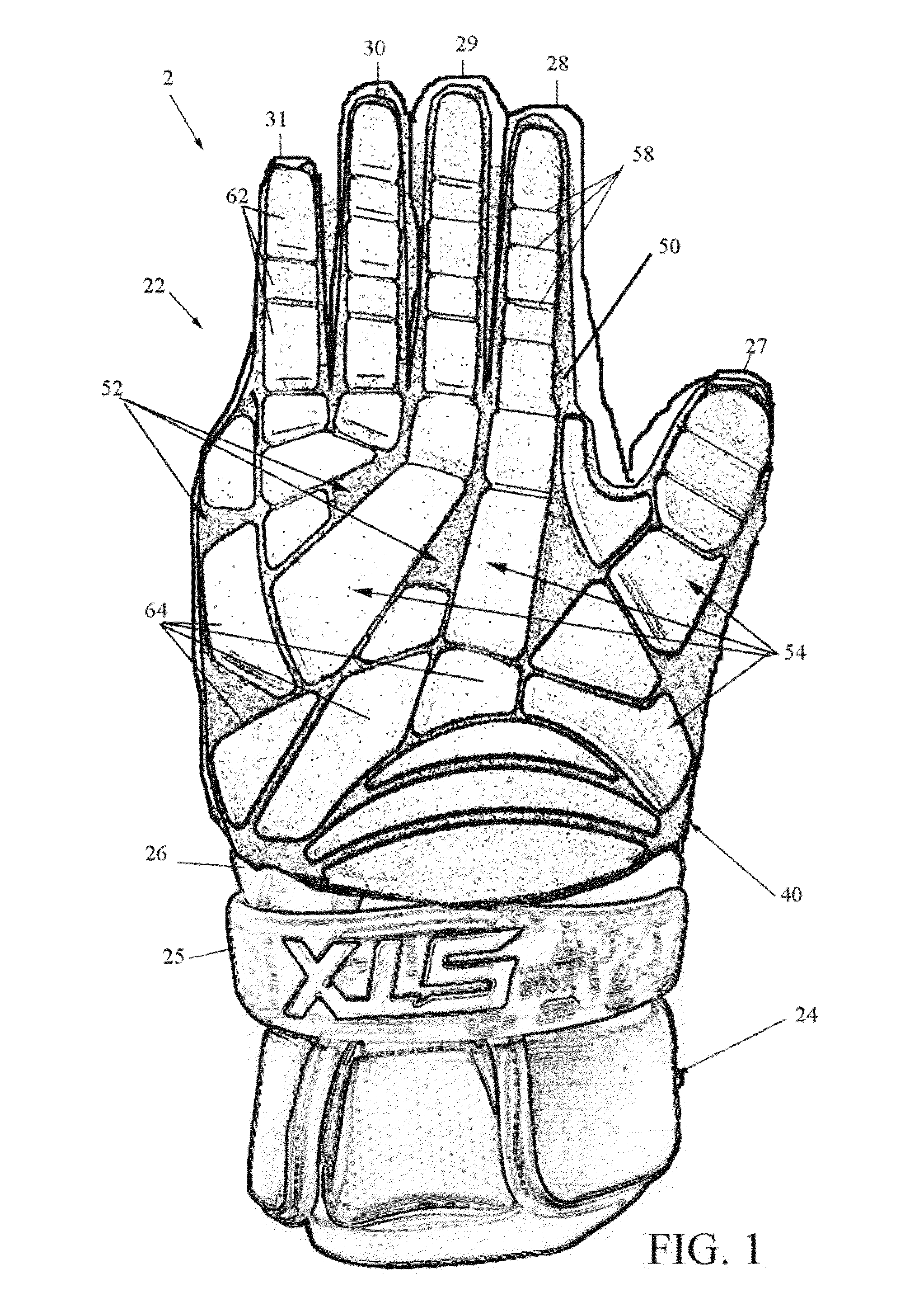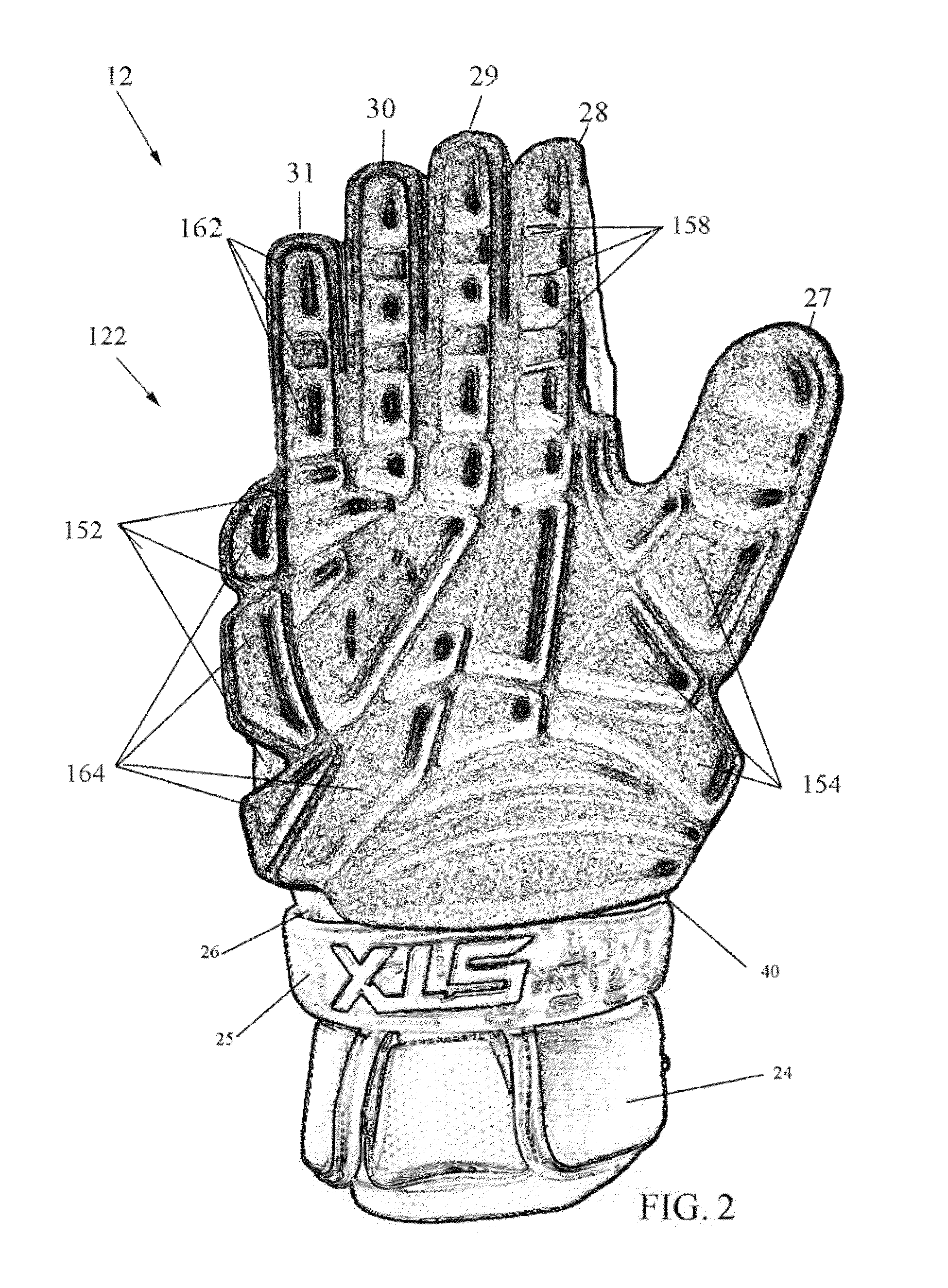Stitchless dorsal padding for protective sports gloves and other protective gear
a technology for sports gloves and dorsal padding, applied in racket sports, protective clothing, kitchen equipment, etc., can solve problems such as loose fit, achieve the effects of reducing the risk of injury, increasing flexibility, and ensuring the user's hand and fingers are protected
- Summary
- Abstract
- Description
- Claims
- Application Information
AI Technical Summary
Benefits of technology
Problems solved by technology
Method used
Image
Examples
example 1
Sonic-Welded Dorsal Panel
[0052]FIG. 5 is a process drawing illustrating the process for making a dorsal section of glove 2 for the embodiment of FIG. 1. Initially, at Step 1 the entire array of protective pads 52 is produced by either cold or heat compression in a tool, for example, cast-in-place by pour-casting into a two-part mold. At step 2, the protective pads 52 can be die-cut either post compression or during compression to attain their finished form. As seen at Step 3 the protective elements are placed back into the tool / mold and pressed onto a substrate using an adhesive film laid overtop pads 52 to keep them registered. As seen at Step 4, the combined film, substrate and protective pads 52 are placed into a flatbed high frequency welding station 100 as seen at B. To perform HF welding, two opposing die platens 150, 160 act as capacitor plates. An oscillating electrical current is applied to the mold 72 / fabric blank 62 combination between the die platens 150, 160. The oscill...
example 2
Textile Reinforced Compression Molded Foam Rubber Dorsal Panel
[0054]FIG. 6 is a process drawing illustrating the process for making a dorsal section of glove 2 for the embodiment of FIG. 2. Initially, at Step 1a mold fabricated with protective element cavities is pre-heated.
[0055]At Step 2 an optional thermoplastic polyurethane (TPU) film is laid on the bottom portion of the mold. One skilled in the art should understand that the TPU film may be omitted to reduce manufacturing cost.
[0056]At Step 3 the mold is closed and dorsal section of glove 2 is vacuum formed by releasing the air out of the bottom portion of the tool / mold so that the TPU film lines the bottom of the tool. At step 4 polyurethane is poured into the tool / mold using multiple gates, to allow the polyurethane to completely fill the tool cavities.
[0057]At Step 5 the tool is put on a conveyer through an oven. The polyurethane thermally expands and fills the tool / mold cavities. At Step 6 the tool is opened. At Step 7 a su...
PUM
 Login to View More
Login to View More Abstract
Description
Claims
Application Information
 Login to View More
Login to View More - R&D
- Intellectual Property
- Life Sciences
- Materials
- Tech Scout
- Unparalleled Data Quality
- Higher Quality Content
- 60% Fewer Hallucinations
Browse by: Latest US Patents, China's latest patents, Technical Efficacy Thesaurus, Application Domain, Technology Topic, Popular Technical Reports.
© 2025 PatSnap. All rights reserved.Legal|Privacy policy|Modern Slavery Act Transparency Statement|Sitemap|About US| Contact US: help@patsnap.com



